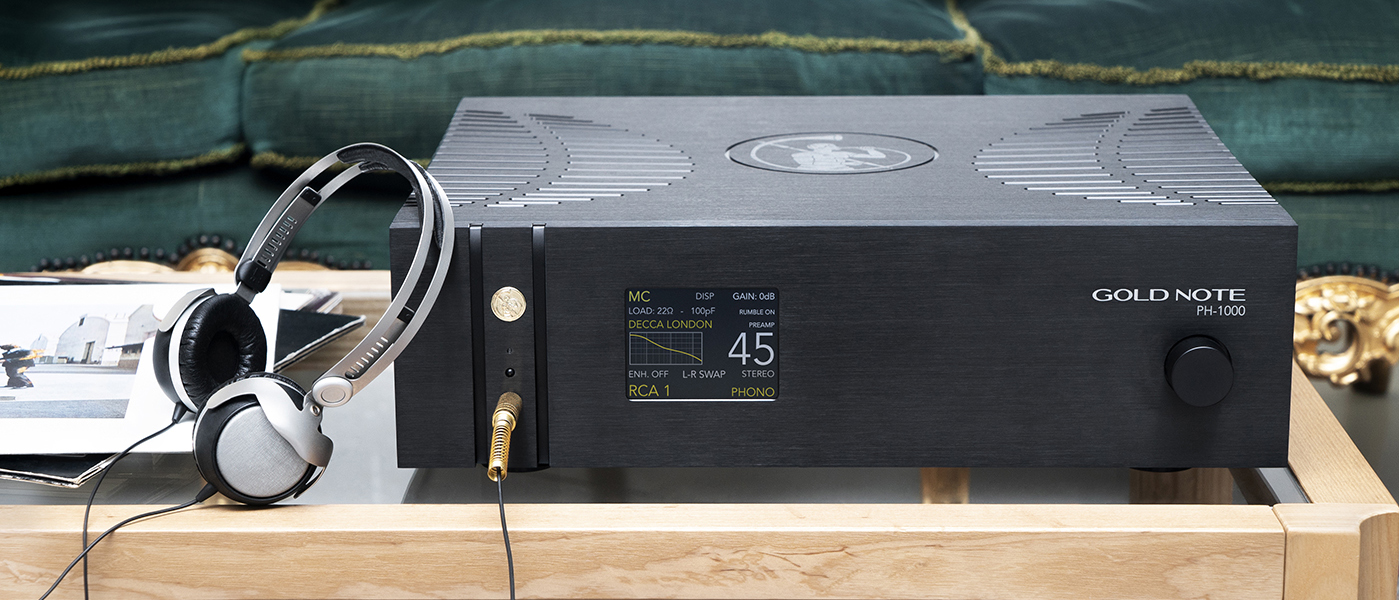What Hi-Fi? Verdict
The PH-1000 from Gold Note is a phono stage to end all phono stages. It's rich in features, gorgeously designed, sounds superb and doubles as a more-than-capable pre-amp and headphone amp to boot.
Pros
- +
Unique phono stage
- +
Extraordinary flexibility
- +
Amazing sound-field
Cons
- -
No high-cut filter
- -
Mini-B USB connector
- -
Uninformative manual
Why you can trust What Hi-Fi?
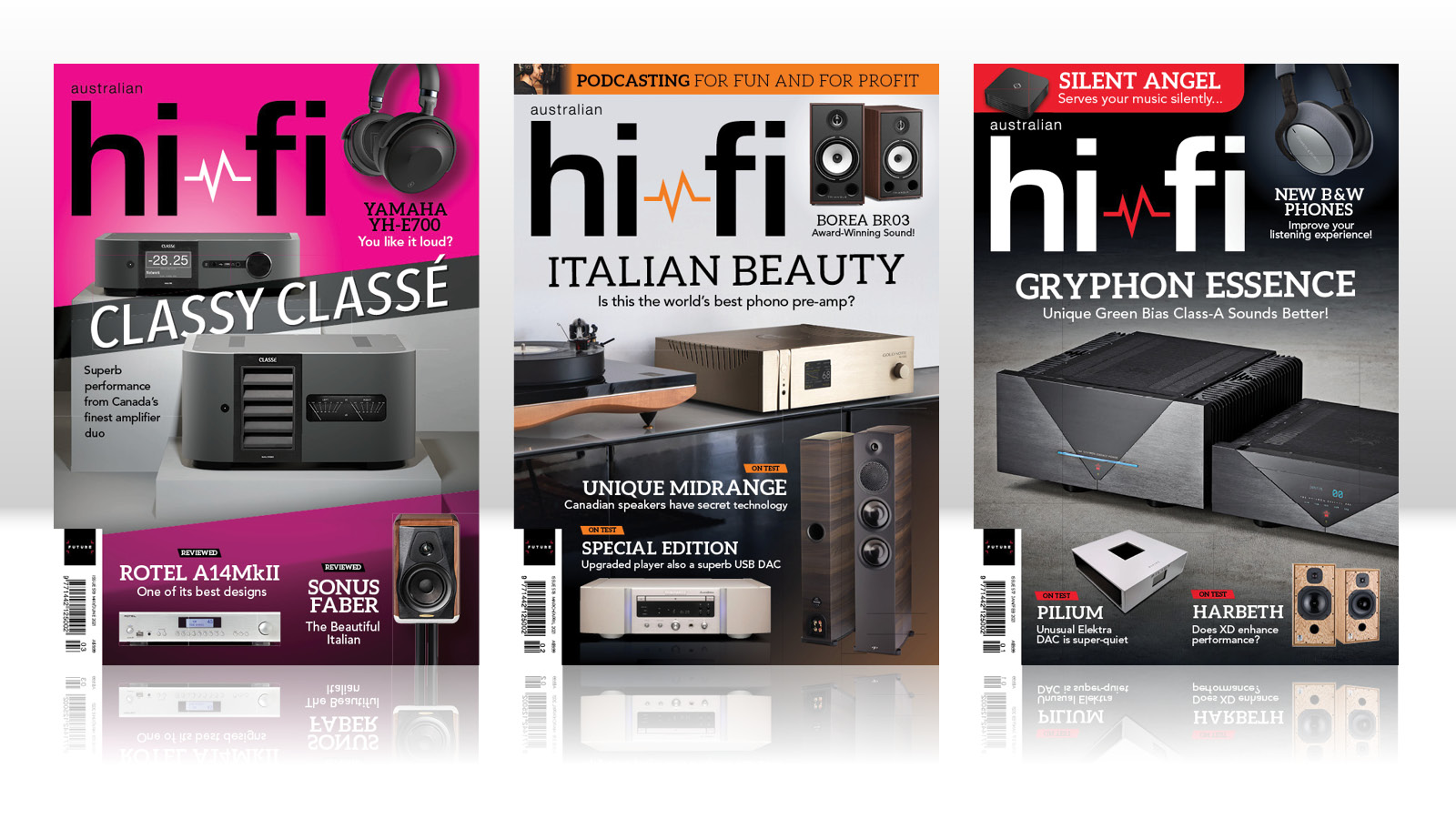
This review and test originally appeared in Australian Hi-Fi magazine, one of What Hi-Fi?’s sister titles from Down Under. Click here for more information about Australian Hi-Fi, including links to buy individual digital editions and details on how to subscribe.
If you use a high-quality phono cartridge, a high-quality external phono stage is essential if you’re to extract the best performance from it. The phono stages built into even the best high-end pre-amplifiers and integrated amplifiers simply won’t do it justice, most particularly if you’re using a moving-coil cartridge.
Although there are many high-quality phono stages available, most of them are difficult and inconvenient to use, and don’t offer the wide range of load, gain and filter options I’d expect to find in 2021.
You kind of have to choose one that best-matches the cartridge you’re using, so if you subsequently change to a different cartridge, your phono stage might not provide the correct load or gain for it, which would mean buying a whole new phono stage or sticking with a phono cartridge you’ve decided is not the best for you.
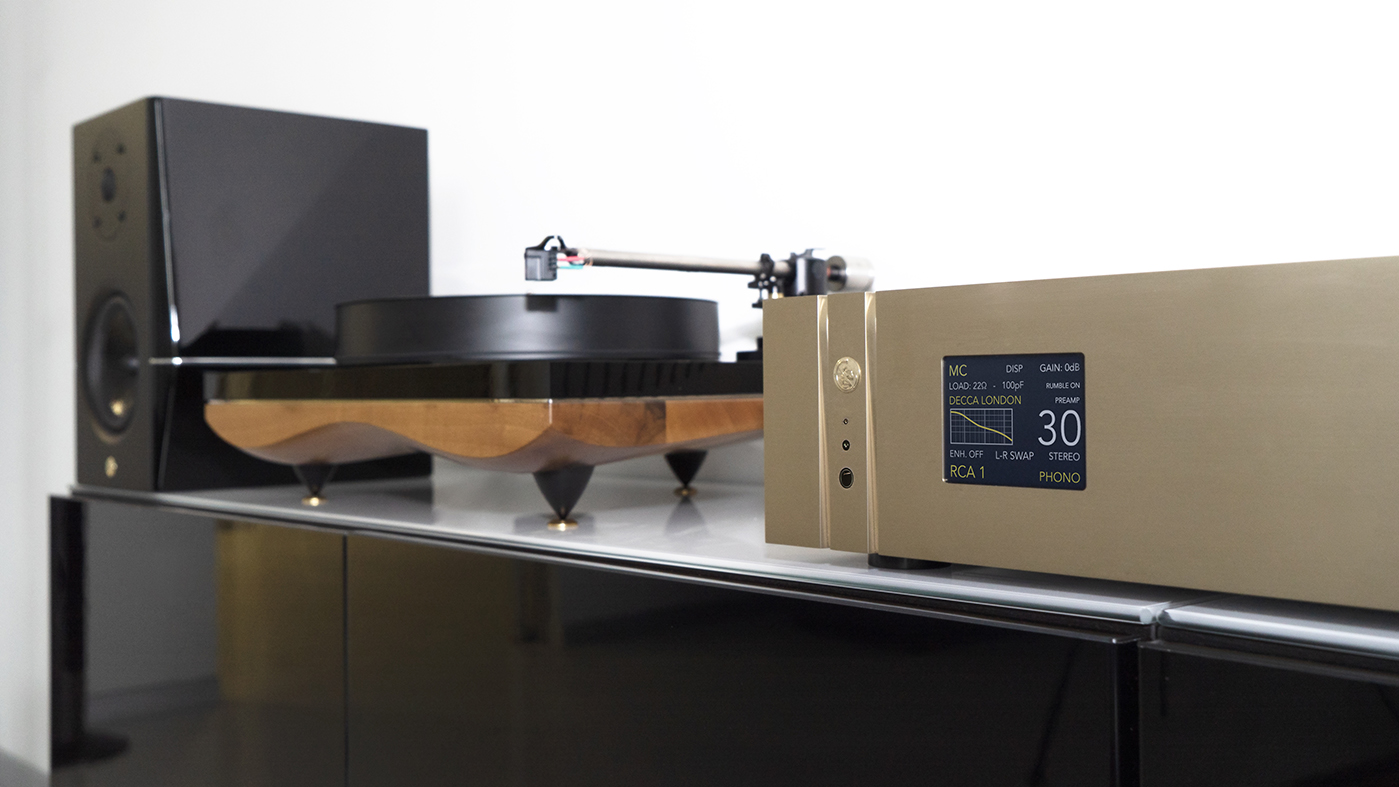
Which makes Gold Note’s latest and greatest phono stage, the PH-1000, an absolute breath of fresh air. It has every phono load and gain adjustment you will ever need in order to correctly match any cartridge ever developed – or will be developed in the future– plus it has selectable – and adjustable! – LP equalisation curves, so you can correctly play back any LP ever pressed. It has loads of other features as well, almost too many to detail in this review, in fact!
Finally, unlike most phono stages, the PH-1000 looks beautiful, particularly when it’s powered-up so you can see its fabulously informative bright TFT multi-coloured control panel.
Equipment
Perhaps it is not so surprising that the Gold Note is beautiful, because it is designed and built in Italy, a country whose citizens have a track record of making beautiful objects, from the Mona Lisa to the Ferrari 488 Pista.
Italy also has a track record for functionality, and the Gold Note PH-1000 is certainly that, because despite its flexibility and the number of options available, absolutely everything is controlled with just that single solitary rotary control you can see to the right of the TFT display.
Gold Note calls it an ‘SKC’, which is short for Single Knob Control. It not only turns, but can be pushed inwards, which is the secret to its ability to multi-task. SKC might not be the most elegant of acronyms, but it describes the control perfectly.
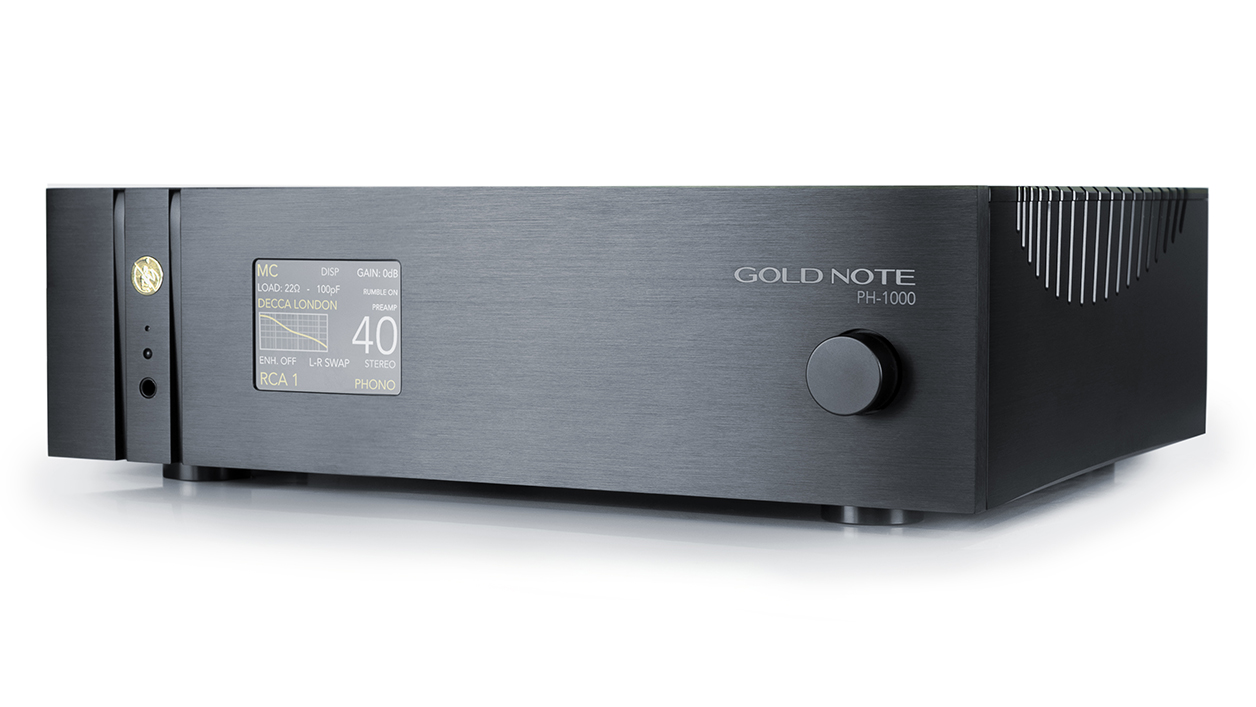
It is essential to set the gain of any phono stage correctly in order to get the ideal signal-to-noise ratio from moving-coil and moving-magnet cartridges while at the same time not driving the phono stage into overload, and for this purpose you can adjust the otherwise fixed gain of the PH-1000 (which is 65dB on the moving-coil setting and 40dB on the moving-magnet setting) through six different gain levels: –9dB, –6dB –3dB, +3dB, +6dB, +9dB.
High-output cartridges would likely perform best at the –3dB setting, while low-output cartridges would most likely perform best at the +6dB setting, but it’s nice to have that 3dB of extra gain available as an option in the form of the +9dB position. And of course there’s also the 0dB setting, should the default gains of 40dB and 65dB be ‘just right’ for your particular set-up.
After properly matching the gain of a phono stage to best-suit your cartridge, the next most-important task of any phono stage is to ensure that it offers the correct impedance loading for the cartridge. At least it is for moving-coil cartridges – moving-magnet cartridges require exactly 47kΩ.
The Gold Note PH-1000 offers twelve load impedances: 10Ω, 22Ω, 47Ω, 100Ω, 220Ω, 470Ω, 1kΩ, 22kΩ, 33kΩ, 47kΩ and 100kΩ. This list is notable for offering two low impedances that aren’t usually available (10Ω and 22Ω) and also for offering three more than were available on the Gold Note PH-10 (which, at a mere A$2,690, now becomes Gold Note’s entry-level phono stage).
However, this isn’t the end of the Gold Note’s cartridge loading possibilities because you can use two of the PH-1000’s line inputs to fit loading plugs, rather than use them as line inputs. This means that you can provide the exact loading for any phono cartridge ever developed.
When you are using a moving-magnet cartridge, it’s more important to match capacitance, and the PH-1000 offers you the choice of six pre-set capacitance values – 100pF, 150pF, 220pF, 330pF, 470pF, and 1000pF but, as noted in the previous paragraph, you can extend this by using your own load plug.
But although correct electrical matching is essential, the actual purpose of any phono stage – its raison d’etre, if you like – is to ‘correct’ the frequency response of the signal your phono cartridge’s stylus is extracting from the LP’s groove.
This comes about because in order to ‘store’ music on an LP the cutting engineer has to pre-attenuate the levels of the low frequencies, and pre-boost the level of the high frequencies. At the midway point (1kHz) there is no boost or cut. This is the 0dB point.
As the music being recorded on the LP gets progressively lower in frequency, its level is progressively reduced until at 20Hz it is 19.3dB lower than the 0dB reference at 1kHz. The opposite happens with frequencies above 1kHz. The higher the frequency of the music being recorded, the more the audio signal is boosted until, at 20kHz, it’s boosted to +19.6dB.
Because the levels of boost and cut applied are different for every different frequency, the overall effect is described as an ‘equalisation curve’ and the most common of these is the RIAA phono equalisation curve, so-called because it was developed by the Record Industry Association of America.
So in order to ensure the correct response is sent to your main amplifier and then to your speakers, a phono stage must provide an ‘inverse’ curve to restore all the frequencies to their correct levels, for example boosting the bass at 20Hz by 19.3dB and cutting the treble at 20kHz by 19.6dB.
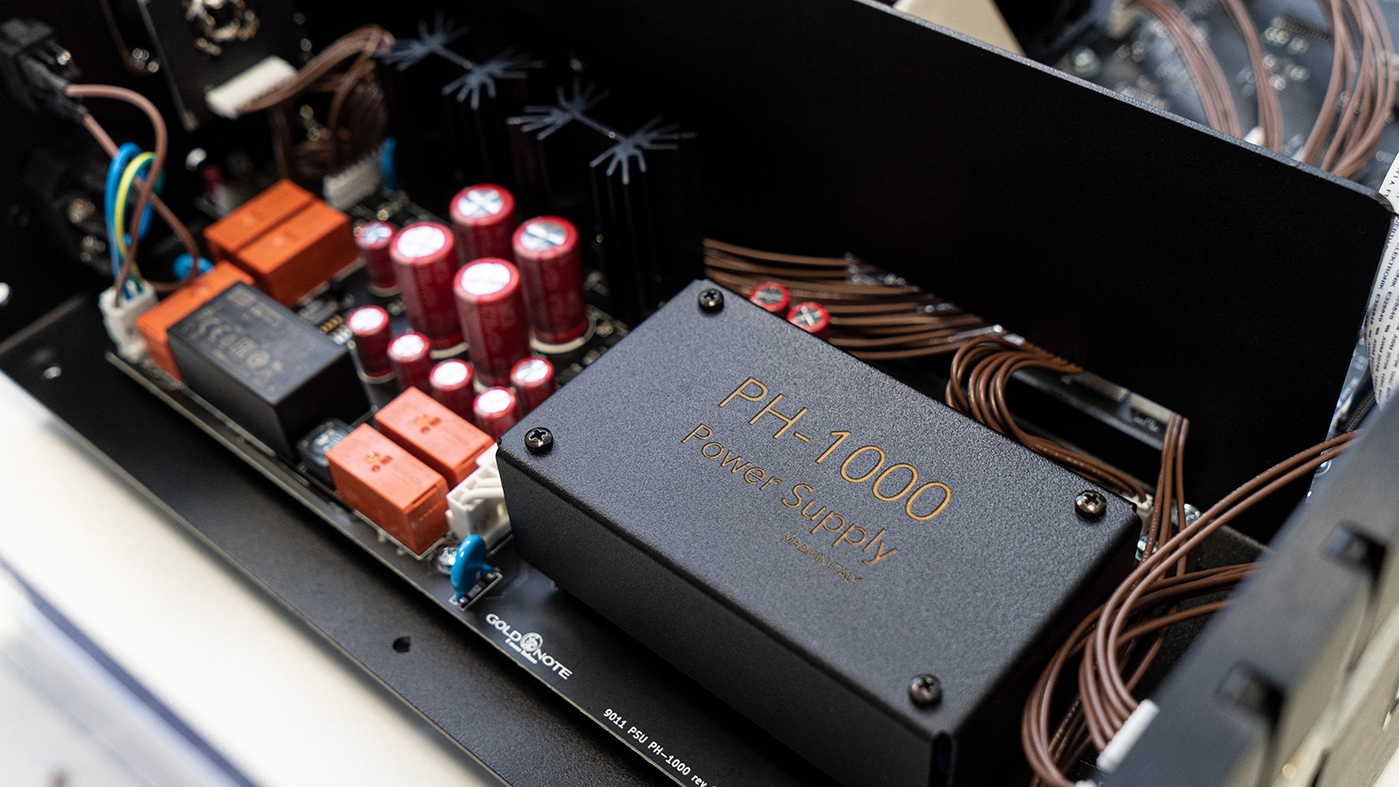
Before the RIAA introduced its equalisation curve, there were dozens of different curves in common use; indeed almost every different record label had its own unique curve. This meant consumers had to have a stash of compensatory ‘curve plugs’ and plug in the one specific to the LP they were playing, which meant lots of plug-changing.
It was to stop all this confusion that the RIAA introduced its own equalisation standard in 1954, and required all industry members to use it. (The RIAA changed its own curve in the ‘70s to an ‘enhanced’ version, so there are actually two different versions of it, eRIAA and RIAA.)
If you buy a PH-1000 you’ll be able to correctly play back every LP in existence, because in addition to providing both the RIAA equalisation curves, it offers more than forty-four other equalisation options, including Capitol, Columbia/CBS, Deutche Grammophon, Decca London, Epic, Mercury, RCA/Victor, Philips, Elektra, Parlophone, and L’Oliseau-Lyre plus the ability to custom-tune any or all of them and/or create your own.
I can’t think of any other phono stage in the world that offers so many equalisation curves, and I can’t think of a single one that offers owners the ability to ‘tweak’ the curve. This truly makes the Gold Note PH-1000 unique.
Rumble (unwanted low-frequency noise) used to be a huge problem when playing LPs, because of the poor tolerances of old platter bearings (and noisy drive motors) but modern turntables suffer much less from either issue. That said, unwanted low-frequency sounds are often found on LPs themselves. Decca’s London studio was so close to an underground train line that many of its recordings contain railway noise.
Gold Note provides a solution to this problem in the form of a Rumble/Subsonic filter. (Infrasonic would be a more correct description than Subsonic!) This filter has a 3dB down-point at 10Hz, with a 36dB/octave slope.
Unlike the Rumble filter on the PH-10, the one on the PH-1000 is switchable, as it should be. So, if neither your turntable nor LP have any low frequency noises you’d like to remove, you should leave the filter in the ‘Off’ position.
If you have a noisy LP you should also be able to reduce noise level by taking advantage of the Gold Note PH-1000’s ability to be switched for mono operation, which will often reduce not only surface noise, but also the volume of any ‘ticks’ and ‘pops’ on it.
In fact, not only can you switch the PH-1000 to mono, you can also invert channel phase (mono or stereo) or even swap left and right channels around. I am not entirely certain why you would want to do this last, but if you want to do it for reasons of your own, you can!
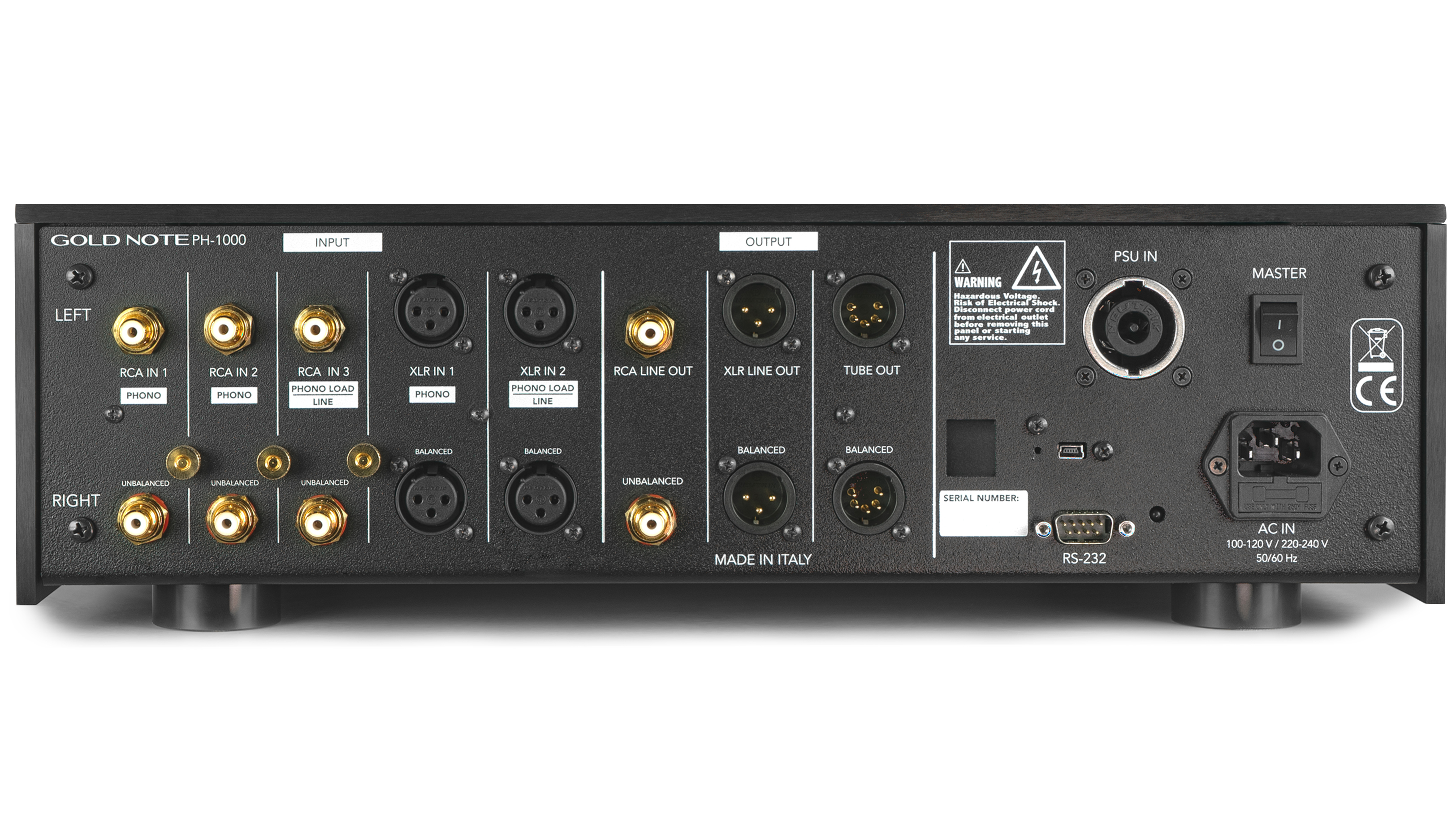
If you have more than one turntable, or your turntable has two or more tonearms, you’re going to love Gold Note’s PH-1000, because it has three phono inputs (two via RCA connectors, and one via an XLR connector) and two line-level inputs (one via RCA, the other via XLR).
If you don’t use one or both of these line-level inputs for additional cartridge loading, it means that you could plug in one or two line-level sources, which would enable the PH-1000 to be a pre-amplifier and/or headphone amplifier as well as a phono stage thanks to it having both a volume control and a headphone output. (And if you’d prefer to control volume somewhere else in your system, the PH-1000’s volume control can be bypassed.)
In many cultures, there’s a belief that nothing made by humans should be perfect (because only God is perfect), for which reason tiny yet deliberate imperfections can be found in cathedrals around the world, across all religions. This could be the reason the PH-1000 does not have a high-cut filter...
Or not. But it’s easily fixed by a firmware upgrade. I’d also question the provision of an old-fashioned Mini-B connector for uploading firmware upgrades. I personally would have preferred a Type-C connector, but this is no biggie.
Listening
I have to admit to being quite excited by the Gold Note PH-1000 before I even played my first LP, because it’s the very first time I have been able to provide absolutely exact load and gain settings for both my moving-magnet and moving-coil cartridges, and one of the very few times I have been able to have both cartridges connected simultaneously, to allow me to perform A–B comparisons on different versions of the same album and/or compare one phono cartridge to another.
And, thanks to the PH-1000’s headphone output, I could also listen to LPs via the shortest path possible, for maximum sound quality.
During the set-up process and whilst familiarising myself with the myriad options provided, I rather gained the opinion that although the SKC is good, it’s actually faster to use the remote control than the SKC itself in many situations. This being the case, it would have been a good idea if the remote had rated a mention in the Owners’ Manual, because operation via the remote is not covered at all.
Also, because Gold Note uses exactly the same remote for other of its products, many of the buttons do nothing when it comes to controlling the PH-1000.
One thing it did take me a long time to get used to is that the SKC seems to move more or less randomly from one function to another. If there is some logical order to the switching sequence, I certainly couldn’t fathom what it was. There’s a similar lack of order when it comes to switching between the various equalisation curves. I would have expected them to be arranged in alphabetical order but they’re not.
Because of the number of adjustments you can make with the PH-1000, it would also have been nice to have had a ‘Factory Reset’ button or function. There may well be one, but I couldn’t find it. The Owners’ Manual could also be improved. The one I was supplied was rather amateurish, and although it was 24 pages long, only 15 of them contained any relevant information.
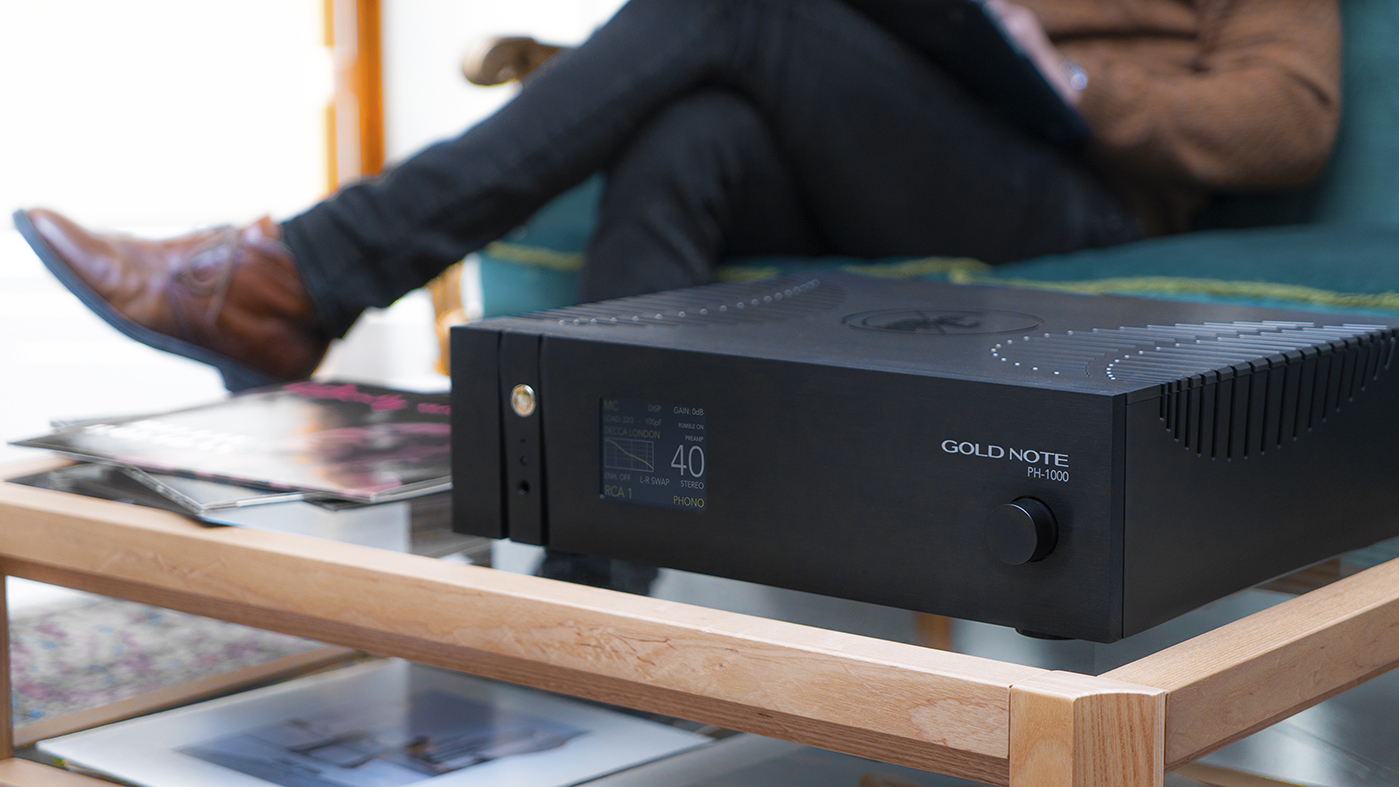
When I finally did get around to playing my first LP, I became even more excited, because the sound quality was everything I could have hoped for, and more. If you want to extract the ultimate performance from all the albums in your collection, be they 45s, LPs, 78s – stereo or mono – the Gold Note PH-1000 is the perfect tool for the job. It’s exactly what you need.
Bass is incredibly depthy and solid. My standard go-to album for evaluating this has for many years been, and no doubt will continue to be into the future, Telarc’s version of Tchaikovsky’s 1812 Overture with Erich Kunzel and the Cincinnati Symphony Orchestra. The sound of cannon-fire on this recording is – if replayed properly – absolutely amazing. It’s no wonder that Telarc includes warnings that playing it too loudly could cause component damage.
Just in case you didn’t know, the cannons were recorded separately and mixed in at the appropriate spots, as were the bells, which is one of the reasons for the insanely good sound and for the perfect balance against the orchestra. Played back via the PH-1000, the sound was so realistically reproduced in my listening room that I involuntarily flinched when the first cannon fired even though I was expecting it.
To test the deepest bass out on something more musical than cannon-fire I switched to another favourite ‘warhorse’ in the shape of Don Dorsey’s Bachbusters on which he uses a wide array of synthesizers to play some of J.S. Bach’s most popular works, all of which have deep bass. Again, the PH-1000 responded perfectly, allowing me to hear the various tonal qualities of the different synthesizers and settings he uses.
For real authenticity, (as in a real pipe organ) I took advantage of the PH-1000’s mono setting to play one of my favourite recordings – Clarence Watters playing three of Cesar Franck’s Chorales on the organ of Trinity College, which was recorded and pressed in mono. It’s a beautiful-sounding instrument and the beauty of its sound was realised perfectly by the Gold Note PH-1000, most so in its mono setting.
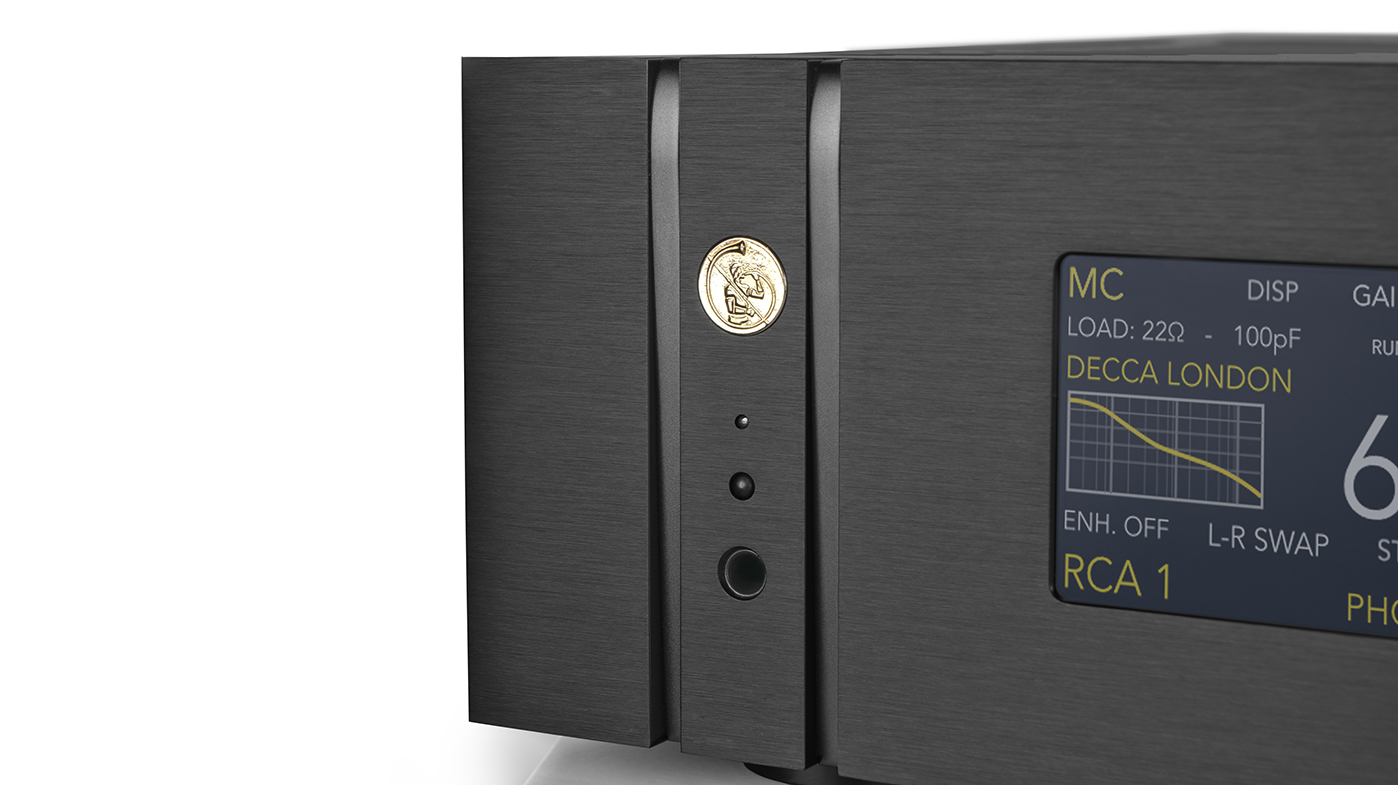
I am a huge Brian Eno fan, so the appearance of a Miles Showell 45-rpm half-speed mastered version of Music For Films was a must-buy event and it has been entrancing me for some time, so when I listened using the PH-1000, and found the subtleties of the improvements to the dynamics and the detailing were more clearly revealed than I’d ever heard before, so it was money well spent. Buy this album and it will be money well spent for you, too.
For evaluating voice I could not do better than play my Rhino version of Joni Mitchell’s Blue. I also have this in formats other than LP (lucky, because otherwise the vinyl would be worn paper-thin!) but I think it always sounds more authentic on vinyl than it does in any other format, and when I heard it via the PH-1000 the reproduction was so masterfully authentic that I took the opportunity to re-record a FLAC capture of it to replace my existing capture. And not just Blue.
During my review process I did new rips of every single one of the LPs I played, and I hope to get through even more before Absolute Hi End (the Australian distributor) requests that the Gold Note be returned. The sound it delivers is just that gorgeous.
The high frequencies I tested with a wide range of recordings, but I kept coming back to Lubomyr Melnyk’s Fallen Trees with its hypnotic piano lines, its ethereal voices and its harmonic echoes. Curiously, my favourite track (Barcarole) is one of the only two tracks that don’t have the word ‘Tree’ in their title.
I also kept coming back to the 2LP Joni 75 album that captures the 75th birthday tribute concert to Joni Mitchell by Diana Krall, Glen Hansard, Norah Jones, Rufus Wainwright, James Taylor and others. (If you buy this album, I’d recommend skipping past Kris Kristofferson’s cover of A Case of You and also playing Krall’s cover of Amelia over and over.)

Final verdict
If you have been holding off on buying a phono stage to see if something incredible comes onto the market, you’ve hit the jackpot, because Gold Note’s new PH-1000 is everything you’ve been waiting for and more. It is a truly incredible phono stage. I can still barely believe such an achievement was possible.
This stunningly-good phono stage sounds wonderful and has every feature and facility you’re ever going to need, plus it’s also an extraordinary pre-amplifier and an extraordinary headphone amplifier into the bargain.
And if all this weren’t enough, it is also completely upgradeable in terms of firmware and also hardware (two additional power supplies and two additional output stages are already available for it), plus I hear there are several firmware upgrades in the wings.
So what else can I say but ‘simply superb’.
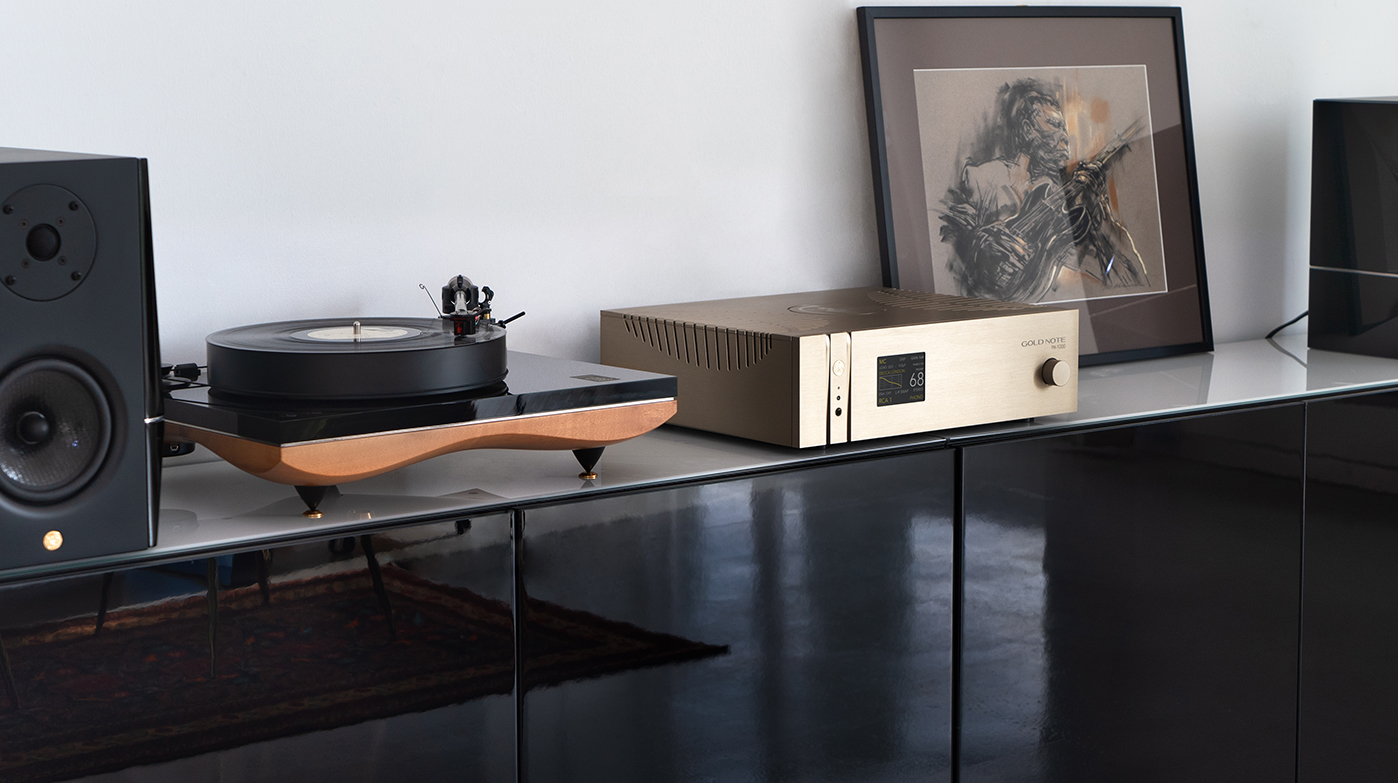
In-depth lab test results
In Graph 1 (below) Newport Test Labs has measured the frequency response of the Gold Note PH-1000’s line input.
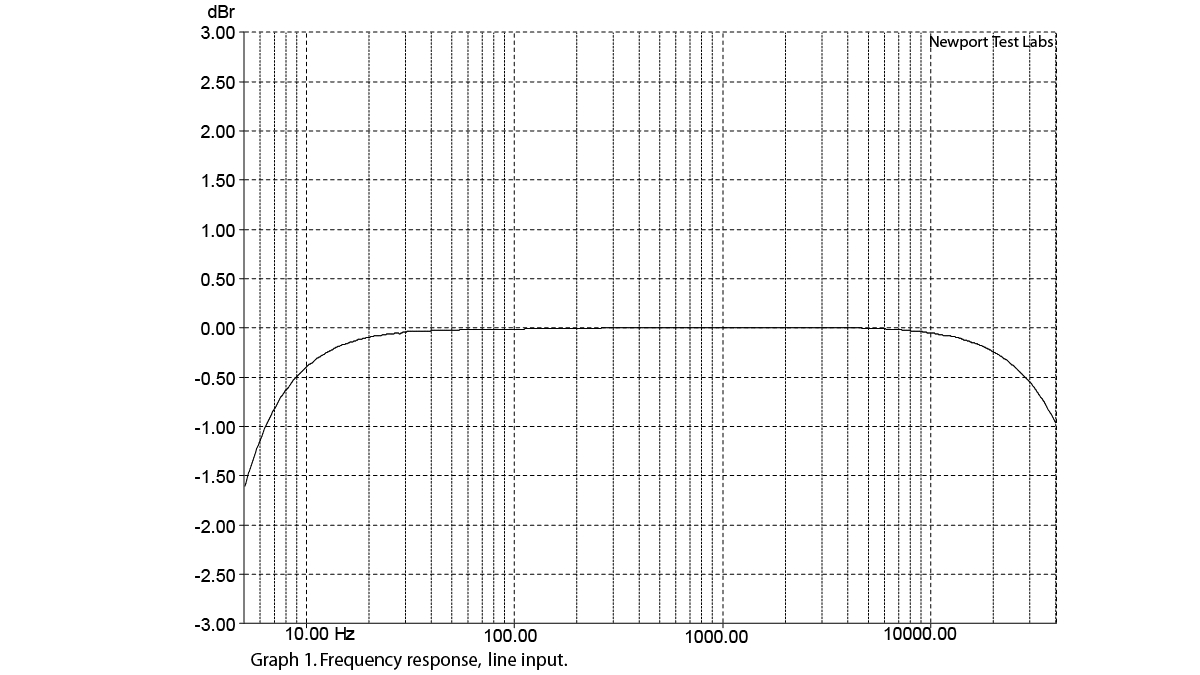
You can see that it’s very flat, being just 0.1dB down at 20Hz and 0.25dB down at 20kHz, giving a normalised response of 20Hz to 20kHz ±0.125dB. At the low end, the response rolls off to be 0.5dB down at 9Hz then 1dB down at 6Hz and 3dB down at 3Hz.
At the upper end of the audio spectrum, the response continues to roll off from being 0.25dB down at 20kHz to be 1dB down at 41kHz and 3dB down at 75kHz.Channel separation was excellent, with Newport Test Labs measuring it as being 95dB at both 20Hz and 20kHz and 113dB at 1kHz.
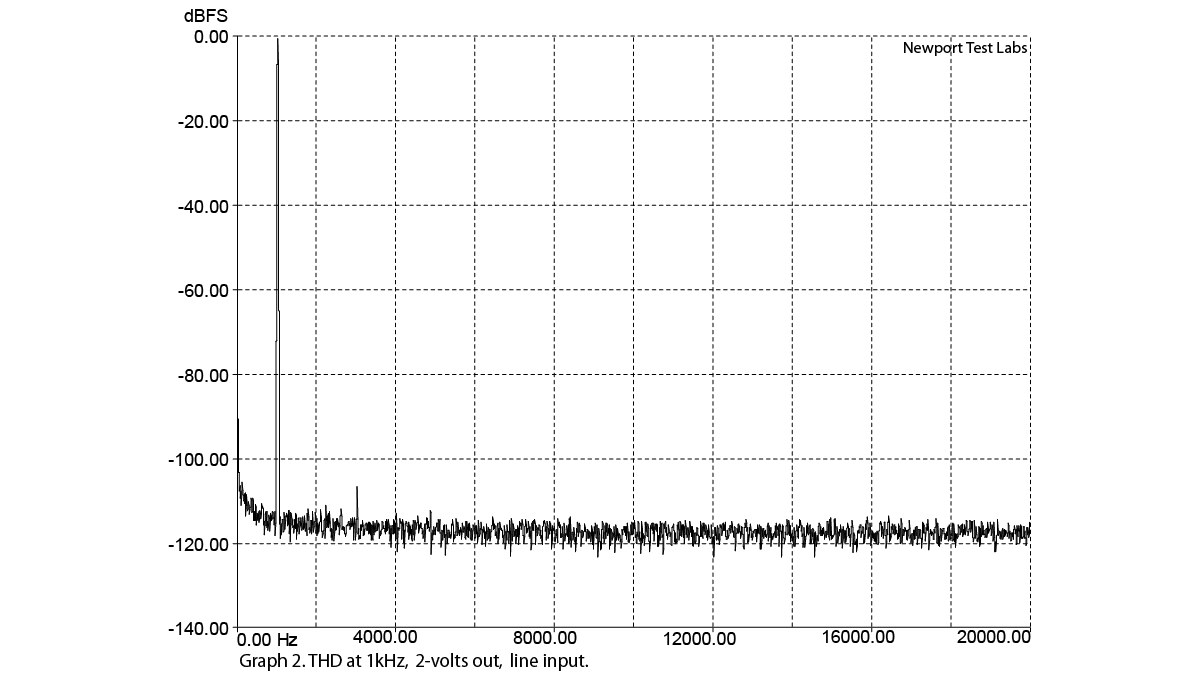
Graph 2 shows the total harmonic distortion measured by Newport Test Labs with a 1kHz test signal and a 2V output. You can see that noise is exceptionally low across the audio band, virtually hugging the –120dB graphing line and that there’s just a single harmonic distortion component at 3kHz, which is around 108dB down, or around 0.0003% THD. The laboratory’s wideband measurement of distortion was 0.006%, as per the figure tabulated in the test results.
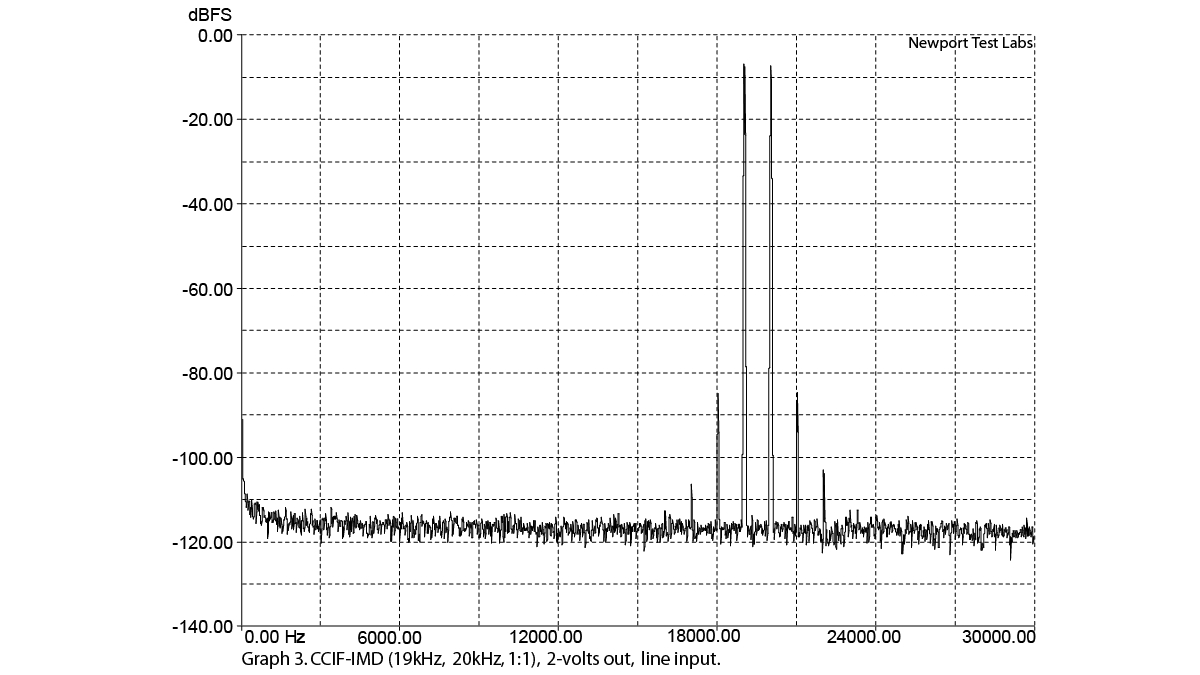
Graph 3 shows CCIF-IMD for a two-volt output. You can see the test signals (at 19kHz and 20kHz) are flanked by IMD products at 18kHz and 21kHz that are 90dB down (0.0031%) and a further two outside them with the 17kHz signal being 117dB down (0.00014%) and the 22kHz signal 103dB down (0.0007%).
Surprisingly, down at 1kHz, where I would normally have expected to see at least a small difference signal, there’s absolutely nothing visible above the noise floor. This is an excellent result for the Gold Note.
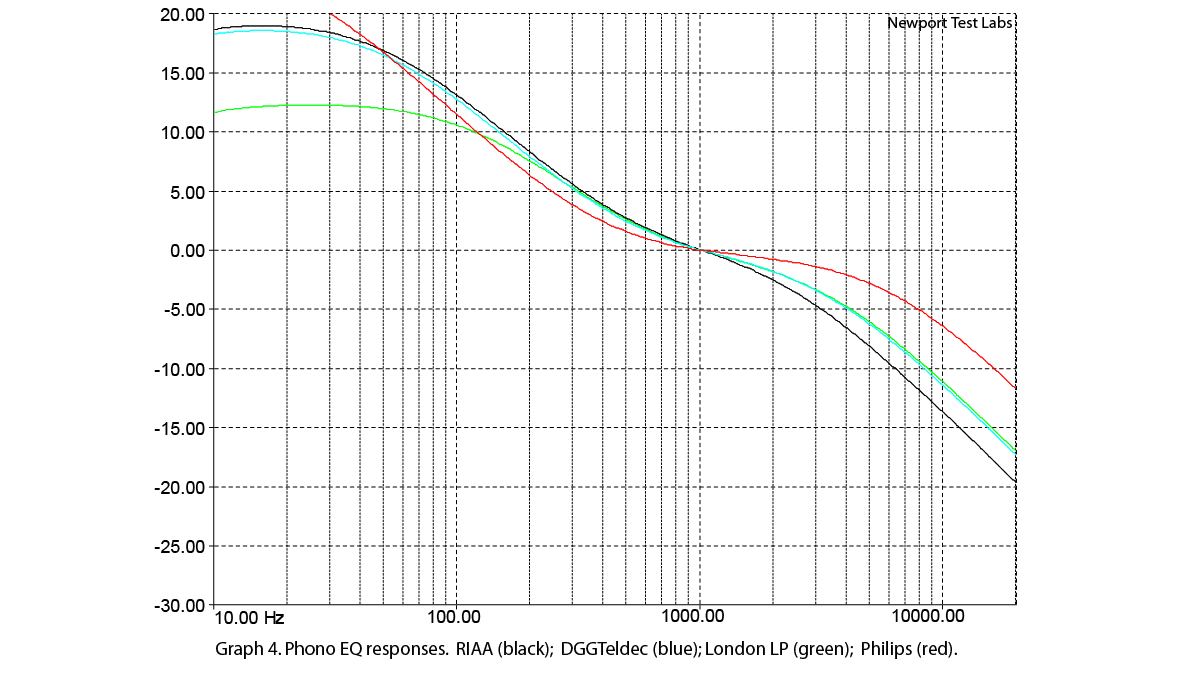
Graph 4 shows the unequalised phono responses for the RIAA filter (black trace), the DGGTeldec filter (blue trace), the London LP filter (green trace) and the Philips filter (red trace).
Although these are measurements, representations of these curves are shown on the PH-1000’s front panel display. The displayed curves are remarkably accurate, though of course the PH-1000’s display is too coarse to be able to show them exactly.
You can see that below 1kHz, the RIAA and DGGTeldec filters are almost identical, whereas above 1kHz the RIAA filter rolls off a little more steeply, and it is the DGGTeldec and London LP filter slopes that are almost identical.
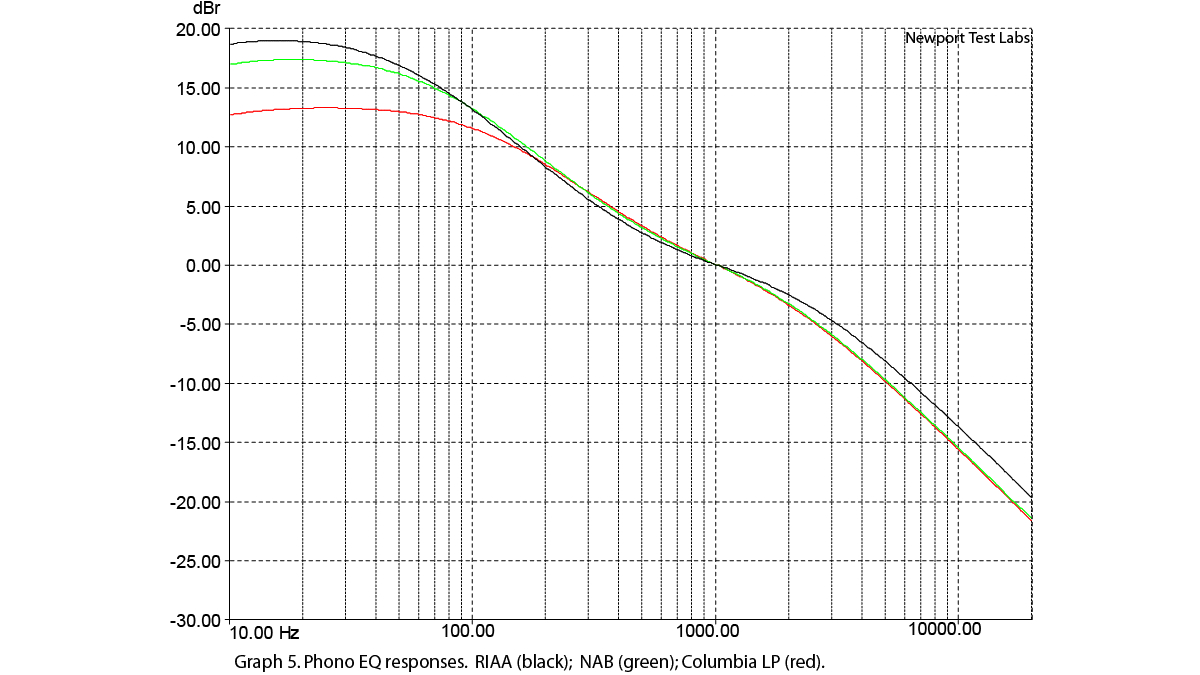
Graph 5 shows that the Columbia LP (red trace) and NAB (green trace) curves are almost identical above 200Hz, but diverge significantly below 1kHz so that there’s almost a 5dB difference at 20Hz. Once again, an RIAA curve (black trace) has been included for comparison purposes.
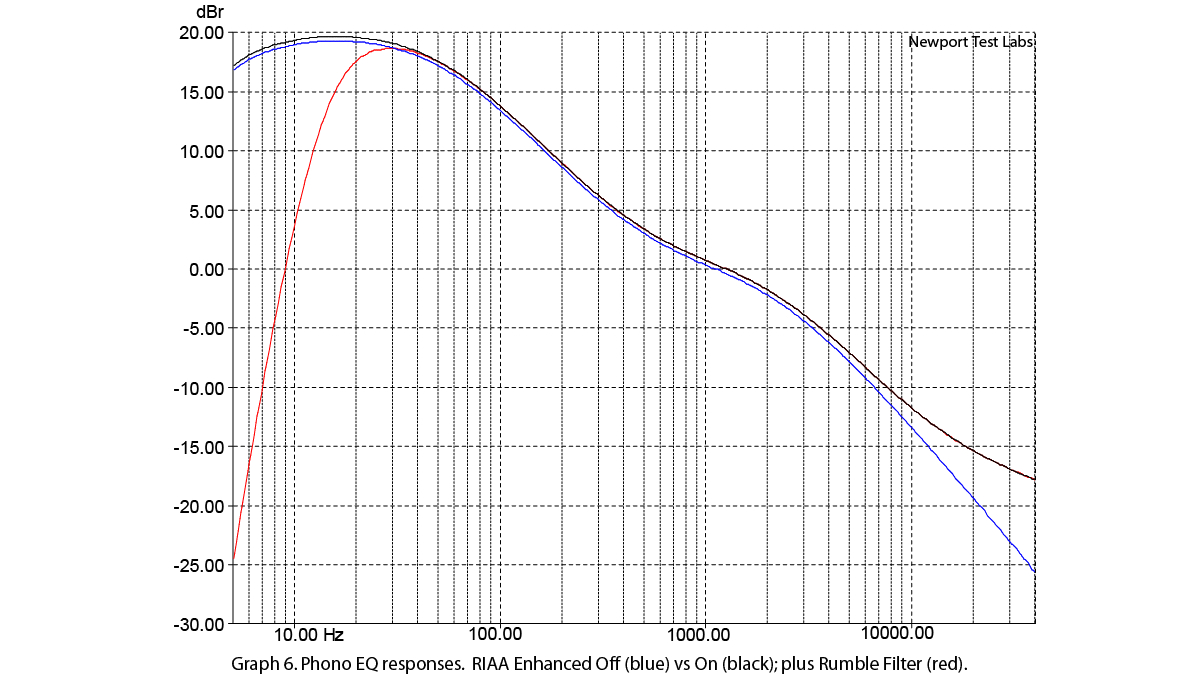
Graph 6 shows the differences between the RIAA and RIAA Enhanced equalisation curves and also the effect of the rumble (high-pass) filter (red trace). The rumble filter is spectacularly effective at its job, such that it’s 65dB down at 5Hz yet has no effect at all at 40Hz and attenuates the response at 20Hz by only a few dB.
You should note that the rumble filter operates only on the phono stage, it has no effect at all on the line inputs.
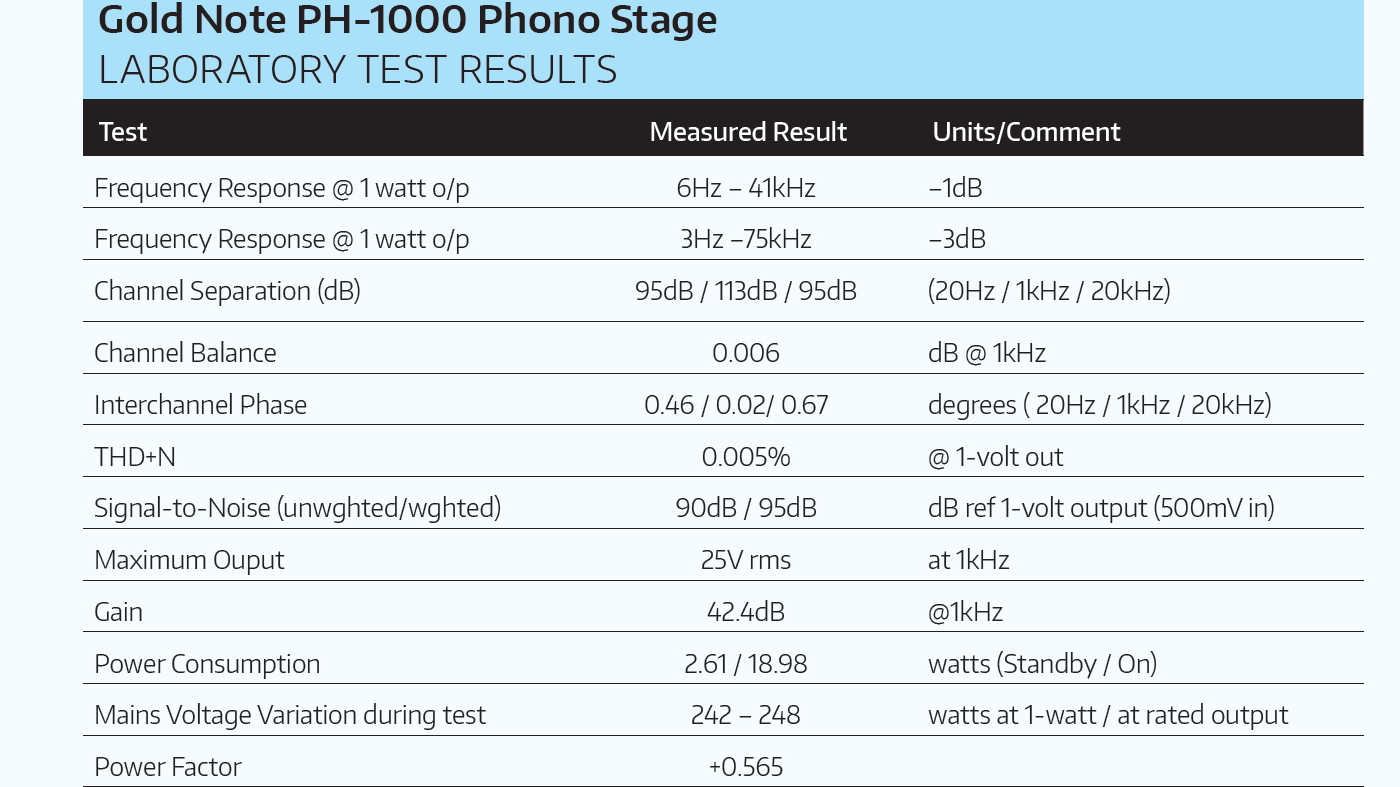
Newport Test Labs measured the overall wideband signal-to-noise ratio of the Gold Note PH-1000 Phono Stage at 90dB unweighted, a figure that improved to 95dB with IHF-A weighting.
This is an outstanding result for a phono stage. Gold Note’s PH-1000 drew 2.61-watts in its ‘stand-by’ mode which isn’t a lot and means you could leave it in this mode, but I’d prefer to see a result of 0.5-watts or less for this test. As you can see from the tabulated results, it draws less than 19-watts when operational.
Overall, the Gold Note PH-1000 returned exceptionally good performance for all tested parameters.
Australian Hi-Fi is one of What Hi-Fi?’s sister titles from Down Under and Australia’s longest-running and most successful hi-fi magazines, having been in continuous publication since 1969. Now edited by What Hi-Fi?'s Becky Roberts, every issue is packed with authoritative reviews of hi-fi equipment ranging from portables to state-of-the-art audiophile systems (and everything in between), information on new product launches, and ‘how-to’ articles to help you get the best quality sound for your home. Click here for more information about Australian Hi-Fi, including links to buy individual digital editions and details on how best to subscribe.
